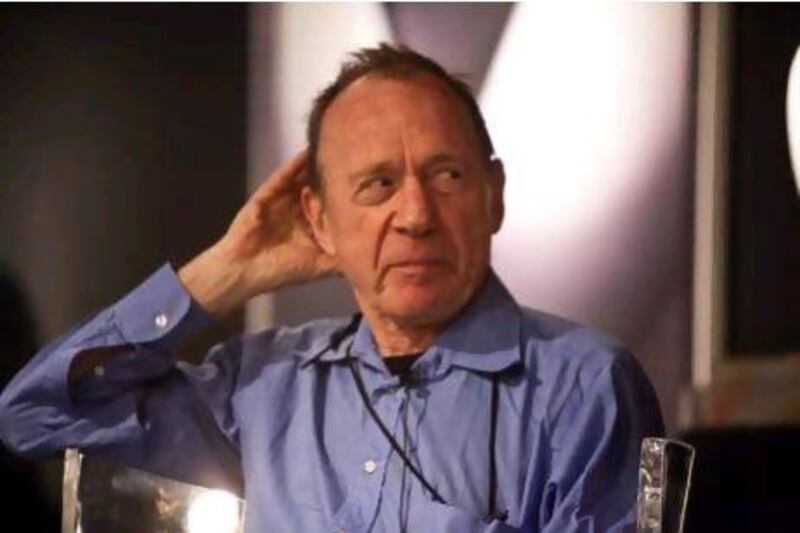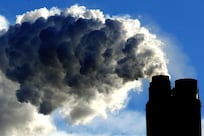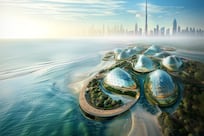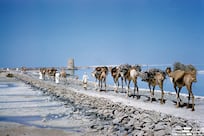Anthony Haden-Guest is to the world of art commentary what Hans Ulrich Obrist is to the world of curation. Both operate in fields traditionally excluded from the monographic series of art history, which prioritises an interest in the artist and the art over the distribution, dissemination and exhibition of these works. Both have pioneered interest in their relative areas; both are celebrated as prolific and engaging individuals.
As a writer, reporter and cartoonist, Haden-Guest has contributed to the world's most lauded publications; as a bon vivant and socialite, he has become part of the art world of which he writes. Rumoured to be the inspiration for the British expatriate journalist Peter Fallow in Tom Wolfe's The Bonfire of the Vanities, he has documented his findings in, among other titles, True Colors: The Real Life of the Art World and The Last Party: Studio 54, Disco and the Culture of the Night.
Having written extensively on the art market, Haden-Guest is bound up in the global arts scene and has watched the growth of the Middle Eastern cultural movement with keenness. "I've been going to the Middle East for many years," he says. "I covered the Lebanese civil war and so I started going to the region extensively from 1980 onwards. I'd go and see the galleries there and was interested in the wealth and scope of the art on show."
For Haden-Guest, the clichéd view of Arab art as "white and gold and ornamental" doesn't ring true. "In reality, it is far more complex than that," he says. "For instance, identity plays a strong role, whether an artist is Egyptian or Lebanese, whether they have spent their working career in London or Paris and how those European influences factor into the work, how different cultures complicate it."
Initially "sceptical" of the burgeoning art fair scene in the region - "I thought it was just a way of channelling in the big petro dollar" - Haden-Guest quickly came to see it as an encouraging reflection of the level of cultural activity in the region. There are also, he argues, excellent rationales for Art Dubai, in terms of bringing in Indian collectors and showcasing emerging artists producing work locally. Anecdotal evidence suggests that collectors in the Middle East, like those in China, are very motivated to collect work by artists from their own cultures, something Haden-Guest sees as " a good and healthy thing". "Not forgetting what Aidan Salakhova, who started Moscow's first commercial art gallery, pointed out to me once: 'This is the Russian Miami. They have six flights a day here.'
"I find Art Dubai of particular interest," Haden-Guest says. "Contemporary art fairs tend to have an identikit aspect, the Big Four most unmistakably. We talk about the 'globalism' of the new art world and, yes, it has grown bigger in every way and, yes, the technology of communications makes mountains of data available 24/7 and, yes, uber-artists are global in the same sense as soccer-players and conductors. Abu Dhabi to me seems to have the international art market covered, so that you are more likely to see all the big western and American names on display there.
"At Art Dubai, I saw no Damien Hirsts on the stands, no Richard Princes, no Murakamis and just one Warhol. Art Dubai is a regional fair, and it is all the more interesting for that. It is stronger on Arab art, with some very good Iranian art. It's not just another cookie-cutter fair selling blue-chip art. They are seriously showing what is being made out there in the region."
Which of these regional artists is Haden-Guest most excited about? "Rokni and Ramin Haerizadeh are extraordinarily good. I also like the work of Lebanese artist Walid Raad and Ahmed Mater, a Saudi doctor who is, geographically, right at the centre of what western media might call the fundamentalist culture. His work, particularly his X-ray pictures, challenge existing parameters of art practice in the region. In Sharjah, highlights included a painting by a Syrian, Saban Adam, and In A Strange Place, a 2009 video by the Turkish filmmaker, Kutlug Ataman, of himself walking blindfolded and barefoot through a desert. I am also keen on the Palestinian photographer Tarek Al Ghoussain, who has produced existential shots of himself, again, alone in the desert."
Does he believe that the movement of western curators and art directors to the region and the opening of centres such as the Guggenheim and the Louvre in Abu Dhabi are a natural progression and integration of the arts scene, or a worrying distillation of the talent already in the region? "Arts professionals are the condottieri of our time," he says. "But they can't be lumped together. They should bring in good ideas from the international art world but also develop what they find locally. Change and movement are, generally speaking, all to the good."
What of the pressures on regional artists to produce work for a western market? Have shows such as Saatchi London's Unveiled: New Art from the Middle East demonstrated that the west expects - and perhaps even demands - a particular type of work, focused on the issues covered in western media, namely gender and terrorism?
"There will always be pressures on artists, but real artists produce art," Haden-Guest says. "They respond to their own culture and what they know in the art world. Middle Eastern artists don't need to produce work for western markets. Their markets are very healthy, so they don't need to be reliant on appeasing London or New York collectors. I think if they continue to be true to themselves and develop as such, they will find plenty of collectors in their own cultures, which will translate globally."
Follow
Arts & Life on Twitter
to keep up with all the latest news and events
[ @LifeNationalUAE ]





